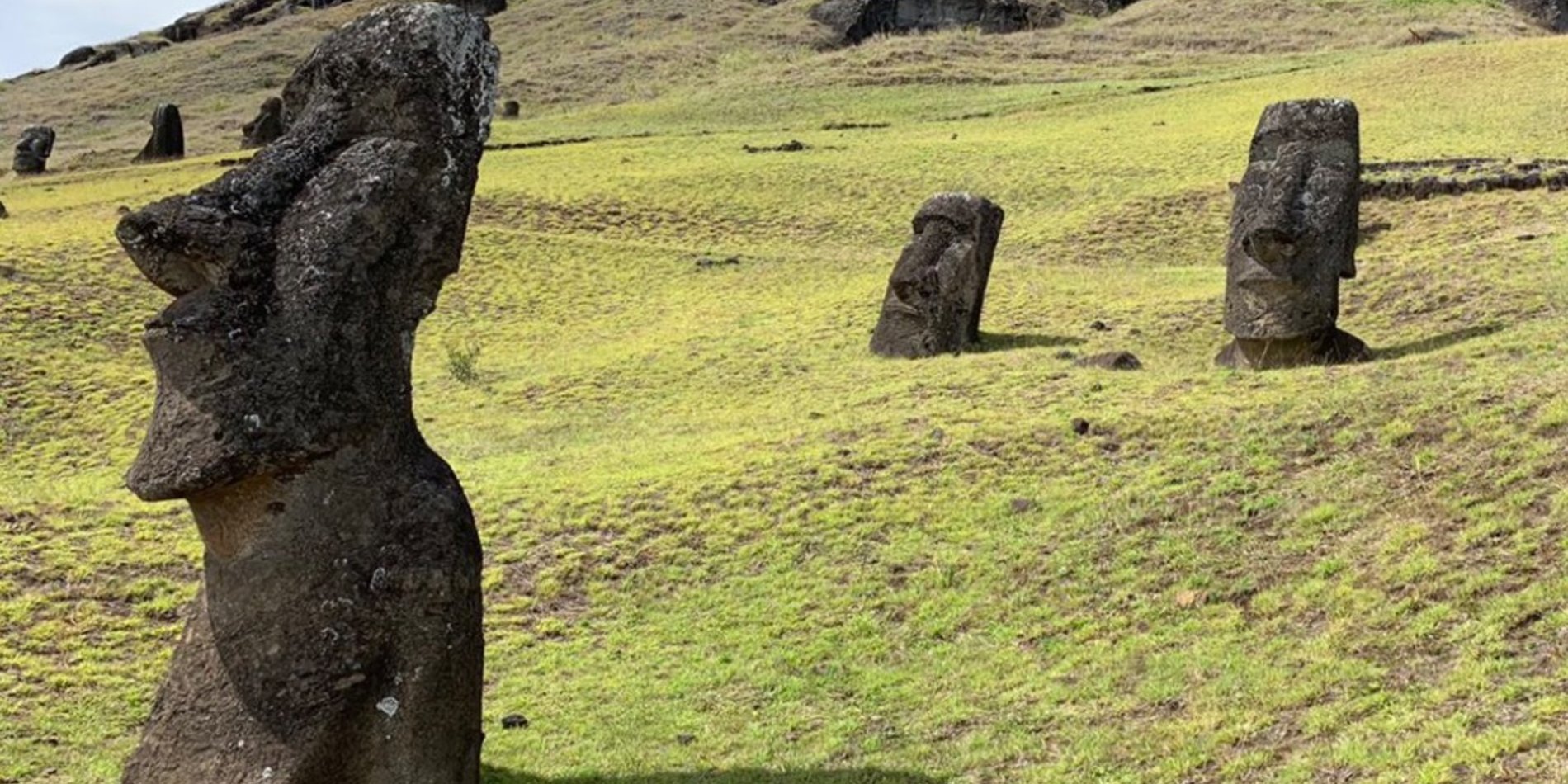Researchers use genetic clues to track and date Polynesian exploration
Long before European ships reached the South Pacific, Polynesian mariners were building catamarans by laying platform decks between parallel canoes, creating seaworthy vessels that they used to settle island chains scattered across a swath of ocean larger than North America.
Anthropologists have long recognized that the inhabitants of these widely scattered isles were related by language and by cultural practices, including, in a few cases, carving stone monoliths from local rock.
Now scientists have estimated when the Polynesian migration occurred, and in what order these explorers voyaged across trackless oceans to islands as far distant as settlers would have had to travel overland from San Francisco to New York. These researchers, from Stanford and Mexico’s National Laboratory of Genomics for Biodiversity, employed sophisticated versions of algorithms used to trace people’s ancestry through DNA to map a wave of migration that began in Samoa around AD 900 and continued for 300 years, carrying settlers north to the tropical Te Henua ‘Enana (the Marquesas), east to temperate Rapa Nui (Easter Island) and southwest to remote Raivavae.
Notably, each of these three distant island groups is distinguished by the presence of statues depicting human forms carved from local rock. “Until now it was unclear why these widely separated islands are the only Polynesian islands with those enormous stone sculptures,” said Alexander Ioannidis, adjunct professor with the Institute for Computational and Mathematical Engineering at Stanford and co-author of the study, which was published in Nature. “We show that despite being very far apart, these islands are very closely connected genetically.”
Work on the islands began in 2013 when Mexican scientists Andrés Moreno and Karla Sandoval, then postdoctoral scholars studying population genetics with Stanford professor Carlos Bustamante, began collecting DNA samples from volunteers on Rapa Nui. These samples were later combined with samples collected on other islands by the Universities of Chile and Oxford to assemble at least 430 specimens. Working with Stanford PhD student Javier Blanco, the researchers then used statistical learning algorithms to identify and remove European genetic sequences from each of the 430 DNA samples to isolate those portions of each genome that the volunteers had inherited from their Polynesian ancestors.
The scientists then compared these subsets of Polynesian DNA by leveraging a population genetics phenomenon known as the founder effect. The idea is that when a small band of people from a larger group settle elsewhere, their DNA will have some traits that were rare among the larger group, but which will now be more common in the new population, if some of the small band of founders carried these traits. Should another band of settlers leave this new population to settle another island, the now common traits will likely travel with them, leaving a genetic trail of islands with traits that can be traced back, computationally, like pearls on a string, to reconstruct the path of explorers who settled one island, then another and another.
Using these techniques, the trio of researchers showed how Polynesian settlers from Samoa had, by AD 1100, made a series of island hops to the Tuāmotu Archipelago. From there, Tuāmotu settlers sailed north to Te Henua ‘Enana, south to Raivavae and, ultimately, east to Rapa Nui and, in each of these three locales, erected different variations of the iconic megalithic statues, whose connection has long been a mystery.
The findings in this study correlate with results these same researchers published in Nature in 2020 when they used another set of genetic techniques to show that Polynesian explorers met Native Americans around AD 1200 and left offspring whose descendants still pass on subtle but detectable traces of Native American DNA on several of the islands that were settled from the Tuāmotu Archipelago.
“The genetic evidence suggests that Tuāmotu seafarers were particularly adventuresome, even relative to other Polynesians,” said Ioannidis, and adds scientific heft to other hints of possible contact between Indigenous South Americans and seafarers from the South Pacific long before European contact forever altered the fortunes of both peoples.
“This is not only a fascinating chapter of human exploration revealed through genetics, it has also been an honor to interact with participants and local communities throughout this research journey and contribute to the understanding of their genetic origins,” Moreno said. “This is knowledge that reshapes our understanding of human history and will survive in the literature thanks to these collaborative efforts.”



